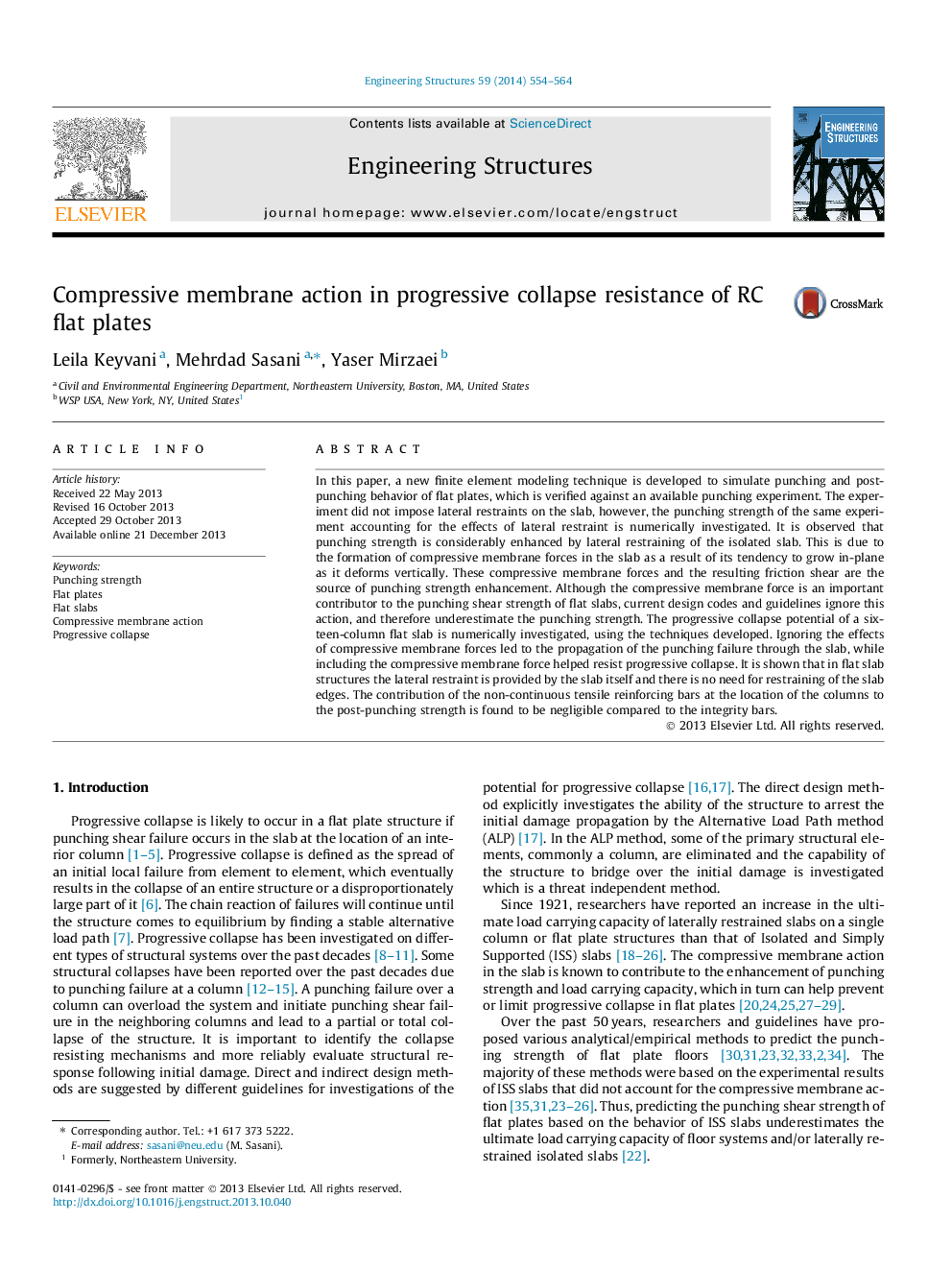| Article ID | Journal | Published Year | Pages | File Type |
|---|---|---|---|---|
| 6740935 | Engineering Structures | 2014 | 11 Pages |
Abstract
In this paper, a new finite element modeling technique is developed to simulate punching and post-punching behavior of flat plates, which is verified against an available punching experiment. The experiment did not impose lateral restraints on the slab, however, the punching strength of the same experiment accounting for the effects of lateral restraint is numerically investigated. It is observed that punching strength is considerably enhanced by lateral restraining of the isolated slab. This is due to the formation of compressive membrane forces in the slab as a result of its tendency to grow in-plane as it deforms vertically. These compressive membrane forces and the resulting friction shear are the source of punching strength enhancement. Although the compressive membrane force is an important contributor to the punching shear strength of flat slabs, current design codes and guidelines ignore this action, and therefore underestimate the punching strength. The progressive collapse potential of a sixteen-column flat slab is numerically investigated, using the techniques developed. Ignoring the effects of compressive membrane forces led to the propagation of the punching failure through the slab, while including the compressive membrane force helped resist progressive collapse. It is shown that in flat slab structures the lateral restraint is provided by the slab itself and there is no need for restraining of the slab edges. The contribution of the non-continuous tensile reinforcing bars at the location of the columns to the post-punching strength is found to be negligible compared to the integrity bars.
Related Topics
Physical Sciences and Engineering
Earth and Planetary Sciences
Geotechnical Engineering and Engineering Geology
Authors
Leila Keyvani, Mehrdad Sasani, Yaser Mirzaei,
